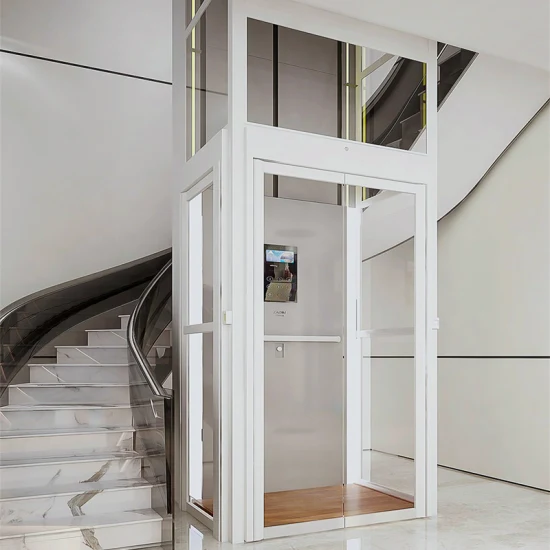Find Trustworthy Lift Repair Near Me for Rapid and Affordable Solution
Find Trustworthy Lift Repair Near Me for Rapid and Affordable Solution
Blog Article
Diving Into the World of Lifts: Usual Issues Faced by Different Lift Mechanisms
As we browse with the vertical transport systems of modern-day buildings, lifts stick out as a crucial element of our day-to-days live. However, behind their seamless operation lies a globe of elaborate systems that can often come across difficulties. From hydraulic lifts to traction systems and machine-room-less layouts, each lift type comes with its collection of common concerns. Understanding these difficulties is vital for guaranteeing the smooth performance of these important systems. Allow's explore the complexities that underlie the procedure of lifts and the potential problems that can occur, clarifying the intricate web of lift devices.
Hydraulic Elevators
Hydraulic elevators, typically favored for low-rise structures, make use of fluid pressure to control the motion of the elevator auto (lift repair companies). This system involves a hydraulic pump pressing oil into a cyndrical tube, causing the elevator to relocate the preferred instructions. While hydraulic lifts are known for their quiet and smooth operation, they do come with their own collection of usual concerns
One widespread trouble with hydraulic lifts is oil leakage. Additionally, concerns with the control system, such as malfunctioning valves or a malfunctioning pump, can cause disruptions in the lift's motion.
Routine upkeep and punctual fixings are necessary to ensure the smooth performance of hydraulic lifts. By attending to these common issues proactively, structure owners can minimize downtime and make certain the safety and security and effectiveness of their vertical transport system.
Grip Elevators
When taking into consideration vertical transportation systems in structures, one more usual kind besides hydraulic lifts is the traction lift. Traction lifts operate using a system of ropes and weights that move the lift cars and truck by grasping onto the hoist ropes. This device enables smoother and much faster upright transportation contrasted to hydraulic systems.
Among the usual problems encountered by traction lifts is rope wear. The continuous activity of the ropes within the traction system can bring about deterioration gradually, potentially causing the lift to malfunction or end up being hazardous for usage. Routine evaluations and upkeep of the ropes are necessary to make certain the elevator's appropriate performance and safety.
One more concern that traction lifts might run into is related to the control system. Issues with the control system can bring about issues such as irregular motion, hold-ups in response times, or even full closures. Regular testing and maintenance of the control system are crucial to stop such concerns and make certain the elevator's dependability.
Machine-Room-Less (MRL) Lifts

Among the essential parts of MRL elevators is the compact gearless grip equipment that is installed within the hoistway. This equipment successfully drives the elevator vehicle without the requirement for large devices found in typical traction lifts. Furthermore, MRL lifts generally utilize a counterweight system to balance the car, additional enhancing their energy performance.
Despite their advantages, MRL elevators might encounter challenges associated with upkeep and repair because of the constrained room for equipment installation. description Availability for servicing parts within the shaft can be limited, requiring specialized training for professionals. Proper maintenance routines and routine examinations are crucial to guarantee the continued smooth operation of MRL lifts.
Overloading and Weight Limitation Issues
Are elevators geared up to deal with excess weight tons effectively and securely? Overwhelming and weight limitation issues are important issues in elevator procedures. Lift manufacturers design lifts with specific weight capacities to ensure passenger security and devices longevity. Exceeding these weight limitations can cause different problems, including mechanical failings, hold-ups, and security dangers.
When elevators are overloaded, it places too much strain on the electric motor, cables, and other components, possibly triggering breakdowns or breakdowns. If they find excess weight, safety and security devices such as sensors and overload sensing units are in place to protect against elevators from relocating. Additionally, going beyond weight limitations can result in increased power usage and damage on the elevator system.
To minimize overwhelming issues, developing managers must prominently show weight restrictions in elevators and enlighten occupants on the importance of adhering to these constraints - lift repair companies. Regular maintenance checks by certified professionals can also assist ensure that elevators are running within safe weight specifications. By addressing overloading and weight limitation concerns proactively, structure owners can improve lift security and efficiency
Electrical System Failures
Surpassing weight limitations in lifts can not just lead to mechanical concerns but likewise potentially contribute to electric system failings within the lift framework. Electric system failures are a crucial worry in lift operation, as they can cause unexpected closures, breakdowns, or even safety hazards.
Additionally, power surges or fluctuations in find more the electric supply can additionally interrupt the elevator's procedure, influencing its efficiency and safety. These electrical disturbances can harm delicate elevator parts such as control board, circuit card, or sensors, bring about system failures. Regular upkeep and examinations are vital to determine and address possible electrical concerns immediately, guaranteeing the safe and reliable operation of lift systems. By adhering to weight restrictions and carrying out regular electrical system checks, structure owners can mitigate the danger of electrical failures in lifts.
Final Thought

Hydraulic elevators, often liked for low-rise buildings, use fluid pressure to regulate the movement of the elevator car.When taking into consideration vertical transport systems in buildings, an additional common kind aside from hydraulic lifts is the grip elevator. Grip lifts operate making use of a system of ropes and counterweights that move the lift cars and truck by gripping onto the hoist ropes. Unlike standard lifts that need a different machine room to house the devices, MRL lifts integrate many of the parts within the shaft, eliminating the requirement for a dedicated device area.In verdict, elevators deal with usual concerns such as hydraulic malfunctions, traction system failings, and electric system problems.
Report this page